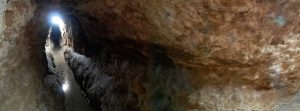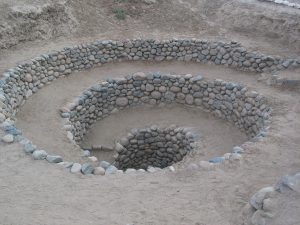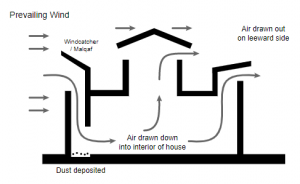The other bit of fun for 2014 was to finish a thought experiment (the longest thus far: ~1984-2014); coming to a conclusion about the shape of the shape of the universe, and how this could be used to imagine the next contractionary cycle; and perhaps, in time, point the way for far-imagined journeys.
The conclusion? The universe is expanding inwards. Perhaps this might be named “the Mobius Universe”? I made a testing puzzle about this: [link] and there’s a new note here [link].**
The strange thing about constructions like this is that you must look away to observe it. We talk of “the mind’s eye” – This is the imagination’s eye. This is a way to solve many sorts of hard problems. Find imaginative-mind-play time. What you are tussling with, put aside. Accomplish tasks entirely different. Find the focus by looking away. Come back refreshed to tackle it again. Every refresh invites a new perspective. Every leaving gets you farther.
Recharge recharges clarity.
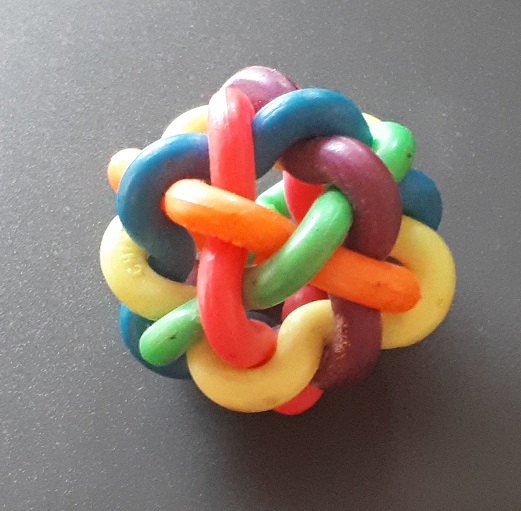
** Original 05Oct2021 version (without “Mobius Universe” title)
_________
May2024 Update #1: This topological construct of the universe appears to be similar recent formal work by cosmologists: https://physics.aps.org/articles/v17/74
May2024 Update #2: Whilst reading a beautifully profound article by Ben Zweibelson, PhD. [Breaking the Newtonian fetish] I got to thinking about tori (or toruses) again, as it is hard to explain the hard-to-imagine construct. Here are two articles [Link #1] [Link #2] by Mark L. Irons (a Portland scholar who has passed away).
New Ideas to Describe Topology of the Universe: This delving got me imagining that perhaps it could be called a “Klein bottle”, but that’s not right. It’s more of a Mobius torus with amorphous (gassy) ever-expanding surfaces – maybe we could call this construct “Mobius Torus Flows” aka “Morflows” (good pun there!), “Klein flows” or “Klein clouds”?.
Maybe this offers a way to make the leap to living Eine (klein)e Nachtmusik? 🙂
 The Village of Lytton, BC had a catastrophic fire in 2021, after a wildfire started in the early evening of June 30, 2021, after suffering the highest temperature ever recorded in Canada. After percolating ideas in the back of my head for a year, last weekend, I wrote up a suggestion and sent it to the Village of Lytton and Lytton First Nation; and then afterwards to leaders in the insurance sector (Insurance Institute of Canada, CISO, Institute of Catastrophic Loss Reduction). The suggestion is to propose a way to mitigate future risk in Lytton and similarly situated communities. The concept is to use natural resources to help retard future fires. The idea is to consider the opportunities that arise when the rivers and architecture of the landscape is seen as a fire defence resource. This is an example of my practice to periodically intellectually refresh…by taking a day, here-and-there, to do something else entirely different. Exercise for the imaginative mind.
The Village of Lytton, BC had a catastrophic fire in 2021, after a wildfire started in the early evening of June 30, 2021, after suffering the highest temperature ever recorded in Canada. After percolating ideas in the back of my head for a year, last weekend, I wrote up a suggestion and sent it to the Village of Lytton and Lytton First Nation; and then afterwards to leaders in the insurance sector (Insurance Institute of Canada, CISO, Institute of Catastrophic Loss Reduction). The suggestion is to propose a way to mitigate future risk in Lytton and similarly situated communities. The concept is to use natural resources to help retard future fires. The idea is to consider the opportunities that arise when the rivers and architecture of the landscape is seen as a fire defence resource. This is an example of my practice to periodically intellectually refresh…by taking a day, here-and-there, to do something else entirely different. Exercise for the imaginative mind.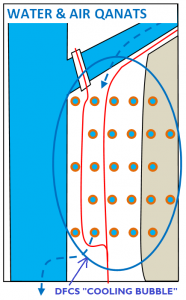 Create a civil infrastructure administration mechanism called the “District Fire Cooling System (DFCS)” to emulate the familiar “District Energy System (DES)”: https://toolkit.bc.ca/tool/district-energy-systems-2/ The concept here is to use natural resources to create a sustainable DFCS fire retarding system for the village.
Create a civil infrastructure administration mechanism called the “District Fire Cooling System (DFCS)” to emulate the familiar “District Energy System (DES)”: https://toolkit.bc.ca/tool/district-energy-systems-2/ The concept here is to use natural resources to create a sustainable DFCS fire retarding system for the village.
